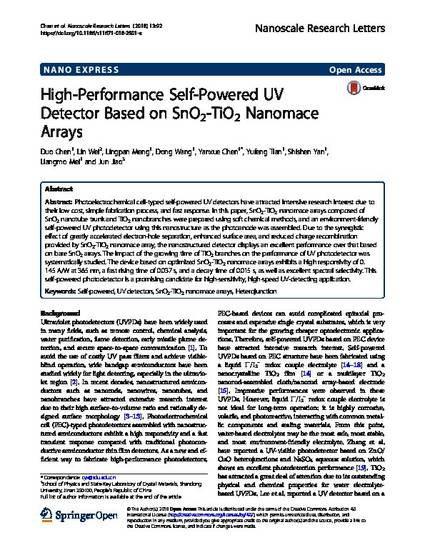
- Energy conversion,
- Photovoltaic cells -- Materials
Photoelectrochemical cell-typed self-powered UV detectors have attracted intensive research interest due to their low cost, simple fabrication process, and fast response. In this paper, SnO2-TiO2 nanomace arrays composed of SnO2 nanotube trunk and TiO2 nanobranches were prepared using soft chemical methods, and an environment-friendly self-powered UV photodetector using this nanostructure as the photoanode was assembled. Due to the synergistic effect of greatly accelerated electron-hole separation, enhanced surface area, and reduced charge recombination provided by SnO2-TiO2 nanomace array, the nanostructured detector displays an excellent performance over that based on bare SnO2 arrays. The impact of the growing time of TiO2 branches on the performance of UV photodetector was systematically studied. The device based on optimized SnO2-TiO2 nanomace arrays exhibits a high responsivity of 0. 145 A/W at 365 nm, a fast rising time of 0.037 s, and a decay time of 0.015 s, as well as excellent spectral selectivity. This self-powered photodetector is a promising candidate for high-sensitivity, high-speed UV-detecting application.

© The Author(s). 2018 Open Access This article is distributed under the terms of the Creative Commons Attribution 4.0 International License (http://creativecommons.org/licenses/by/4.0/), which permits unrestricted use, distribution, and reproduction in any medium, provided you give appropriate credit to the original author(s) and the source, provide a link to the Creative Commons license, and indicate if changes were made.